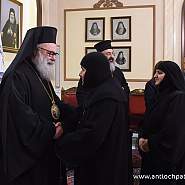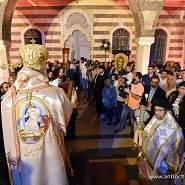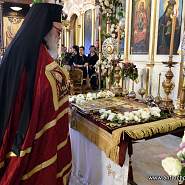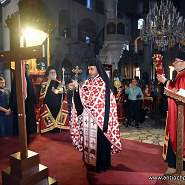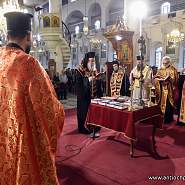
Removal of the Relics of St. Athanasius the Great
In the half-century after the First Ecumenical Council held in Nicaea in 325, if there was one man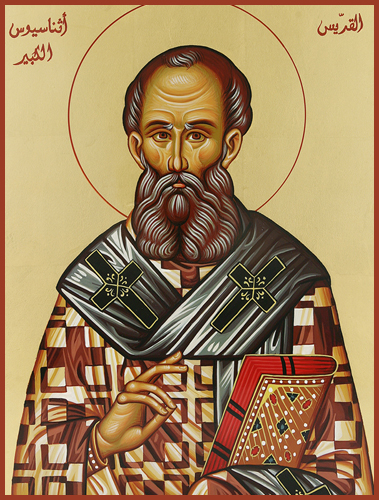 whom the Arians feared and hated more intensely than any other, as being able to lay bare the whole error of their teaching, and to marshal, even from exile or hiding, the beleaguered forces of the Orthodox, it was Saint Athanasius the Great. This blazing lamp of Orthodoxy, which imperial power and heretics' plots could not quench when he shone upon the lampstand, nor find when he was hid by the people and monks of Egypt, was born in Alexandria about the year 296. He received an excellent training in Greek letters and especially in the sacred Scriptures, of which he shows an exceptional knowledge in his writings. Even as a young man he had a remarkable depth of theological understanding; he was only about twenty years old when he wrote his treatise On the Incarnation. Saint Alexander, the Archbishop of Alexandria, brought him up in piety, ordained him his deacon, and, after deposing Arius for his blasphemy against the Divinity of the Son of God, took Athanasius to the First Council in Nicaea in 325; Saint Athanasius was to spend the remainder of his life labouring in defence of this holy Council. In 326, before his death, Alexander appointed Athanasius his successor.
whom the Arians feared and hated more intensely than any other, as being able to lay bare the whole error of their teaching, and to marshal, even from exile or hiding, the beleaguered forces of the Orthodox, it was Saint Athanasius the Great. This blazing lamp of Orthodoxy, which imperial power and heretics' plots could not quench when he shone upon the lampstand, nor find when he was hid by the people and monks of Egypt, was born in Alexandria about the year 296. He received an excellent training in Greek letters and especially in the sacred Scriptures, of which he shows an exceptional knowledge in his writings. Even as a young man he had a remarkable depth of theological understanding; he was only about twenty years old when he wrote his treatise On the Incarnation. Saint Alexander, the Archbishop of Alexandria, brought him up in piety, ordained him his deacon, and, after deposing Arius for his blasphemy against the Divinity of the Son of God, took Athanasius to the First Council in Nicaea in 325; Saint Athanasius was to spend the remainder of his life labouring in defence of this holy Council. In 326, before his death, Alexander appointed Athanasius his successor.
> Press here for the whole story




